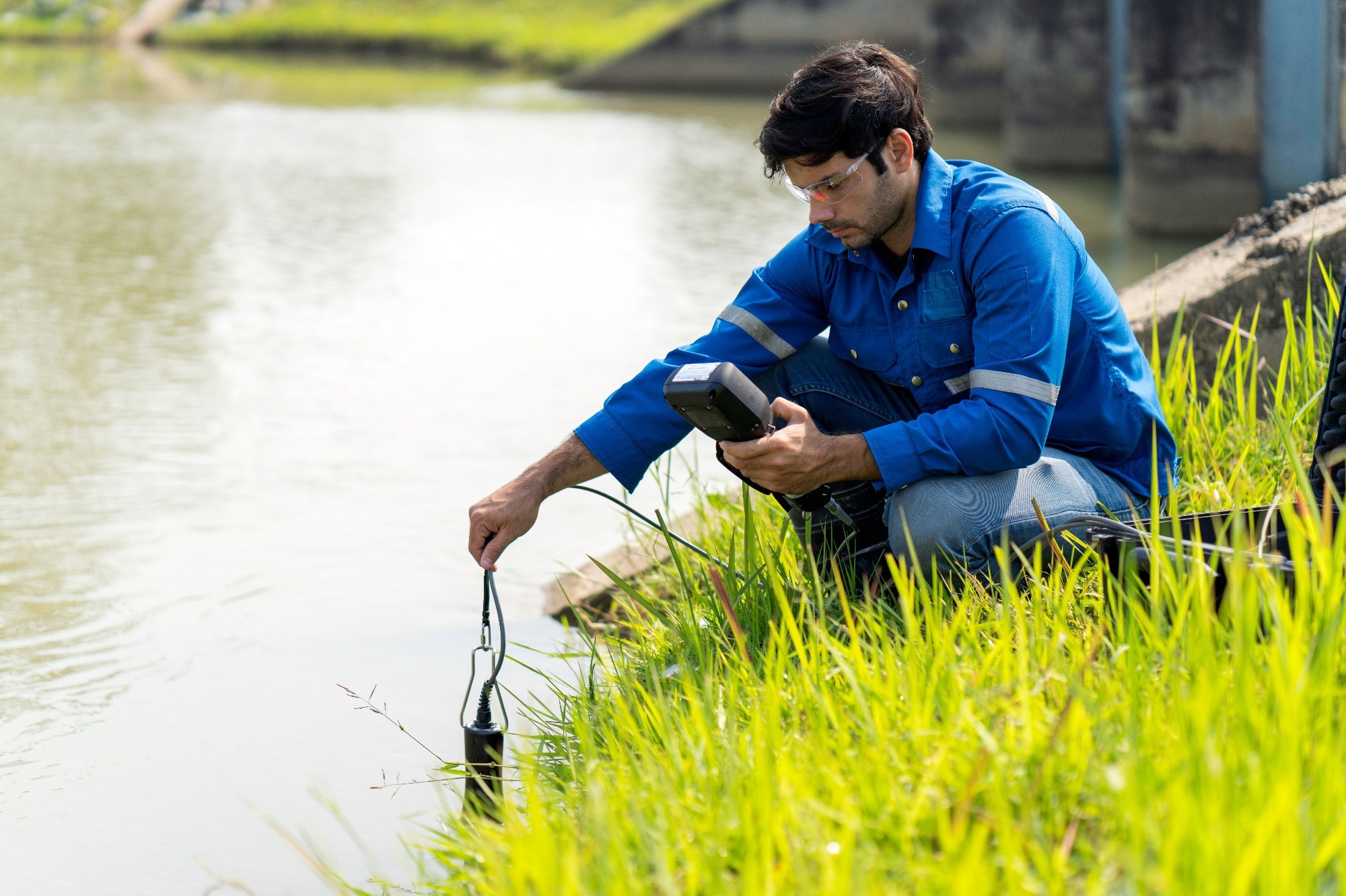The rapid establishment of industries and urban development has resulted in unprecedented levels of industrial wastewater production. Industrial wastewater is responsible for approximately 80 % of the toxic contaminants entering water bodies, leading to pollution and health hazards.

Image Credit: Chatchawal Phumkaew/Shutterstock.com
As industries grow, they consume more natural resources, resulting in large amounts of wastewater containing pollutants, particularly metals.1 Therefore, the environmental monitoring of industrial processes, especially wastewater management, has become a major global concern.
The Importance of Monitoring Metals in Wastewater
Air, soil, and water pollution from industrial waste is linked to many diseases.2 Such waste often contains abnormally high levels of heavy metals, which cause severe environmental pollution when released.
Heavy metals are particularly concerning because they are extremely harmful to living organisms; they do not decompose and can accumulate in the environment. Thus, monitoring metals in industrial wastewater is crucial to maintaining environmental safety.
Various physical and chemical techniques have traditionally been used to remove metals from industrial wastewater. Chemical precipitation, for example, removes metallic ions by introducing specific chemical agents that cause a reaction, turning dissolved substances into solid precipitates. This process is usually followed by coagulation or filtration to remove the solid metal particles.3
Coagulation is a well-known method used to neutralize the charge of metal particles in industrial wastewater, efficiently filtering out heavy metals. It is practical for managing heavy metal contamination and can be used with or without additional water treatment tools.4
Another effective method for removing metals from industrial wastewater is electro-flotation. It involves floating ions or solid particles in a liquid by making them stick to tiny hydrogen and oxygen bubbles. These bubbles get trapped above the cathode and anode of the electrochemical flotation cell, which causes the particles to float to the surface.
Technological Innovations in Metal Detection
Over recent years, there has been a significant shift towards real-time monitoring of industrial wastewater. Traditional methods often require specialized laboratories with expensive and complex equipment, leading to slower response times. However, the use of sensors and modern techniques has effectively addressed these issues, enabling more efficient real-time monitoring of industrial wastewater.5
Real-time Water Monitoring Using Sensors
Traditional methods for detecting heavy metal ions in industrial wastewater typically have low detection limits. There is a push towards making detection methods more portable, cost-effective, and integrated. These qualities are increasingly important in heavy metal ion sensing, making chemical and biosensors popular choices.
Optical detection often relies on a color change caused by the interaction between the target substance and the detection reagent. Recently, portable fluorescent sensors have been widely used for wastewater detection. These sensors analyze substances based on changes in fluorescent properties after a reaction between fluorescent molecules and the target.6
A new portable whole-cell bio-sensing platform has been developed. It uses a simple handheld fiber-optic dissolved oxygen sensor combined with bacterial cultures or dried bacteria. When heavy metal ions are present, they inhibit E. coli respiration, allowing for quick detection of acute toxicity of heavy metal ions in industrial wastewater.7
This highly portable and stable system has a detection limit for Hg2+ using E. coli cultures at 5.62 µM and an IC50 (semi-inhibitory concentration) at 11.64 µM, demonstrating high sensitivity and accuracy in environmental monitoring.
Machine Learning (ML) and the Internet of Things (IoT)
Batik industrial wastewater contains various chemicals that can harm the environment and human health, making efficient and accurate monitoring essential. ML and IoT have recently been used for real-time monitoring and classification of industrial wastewater based on industrial standards.8
Researchers developed a program to collect crucial data on Batik industrial wastewater, including attributes like pH, Biochemical Oxygen Demand (BOD), Chemical Oxygen Demand (COD), and temperature.
This data was processed and classified using ML algorithms, categorizing the wastewater into groups such as toxic and non-toxic based on set quality standards. The program showed high accuracy, supporting more effective and sustainable waste management and helping to protect the environment and public health.
Future Outlook and Challenges
With the boom in ML and Deep Learning (DL) technology, researchers are working to integrate these key technologies into industrial wastewater management systems. Significant challenges include protecting data privacy, improving algorithms, ensuring reliability, and managing multi-agent systems. Other obstacles include reducing operational costs and addressing the toxicity and secondary contamination associated with using nanomaterials in wastewater treatment.9
Advanced industrial wastewater treatment technologies are crucial for successfully removing complex pollutants and disposing of pure wastewater. These innovations will undoubtedly enhance the efficiency of wastewater treatment technologies in industrial settings.
More from AZoM: The Role of Ceramics in the Aerospace Industry
References and Further Reading
[1] Dutta, D., et al. (2021). Industrial wastewater treatment: Current trends, bottlenecks, and best practices. Chemosphere. doi.org/10.1016/j.chemosphere.2021.131245
[2] Bahiru, D., (2020). Determination of heavy metals in wastewater and their toxicological implications around eastern industrial zone, Central Ethiopia. Journal of Environmental Chemistry and Ecotoxicology. doi.org/10.5897/JECE2019.0453
[3] Shrestha, R., et al. (2021). Technological trends in heavy metals removal from industrial wastewater: A review. Journal of Environmental Chemical Engineering. doi.org/10.1016/j.jece.2021.105688
[4] Razzak, S., et al. (2022). A comprehensive review on conventional and biological-driven heavy metals removal from industrial wastewater. Environmental Advances. doi.org/10.1016/j.envadv.2022.100168
[5] Yaroshenko, I. (2020). Real-Time Water Quality Monitoring with Chemical Sensors. Sensors. doi.org/10.3390/s20123432
[6] Hu, T., et al. (2023). Advances in Portable Heavy Metal Ion Sensors. Sensors. doi.org/10.3390/s23084125
[7] Wang, H., et al. (2022). Development of portable whole-cell biosensing platform with lyophilized bacteria and its application for rapid on-site detection of heavy metal toxicity without pre-resuscitation. Analytica Chimica Acta. doi.org/10.1016/j.aca.2022.340354
[8] Febriantono, M., et al. (2023). Classification of Batik Industry Wastewater Quality Using Machine Learning and IoT. IEEE Xplore.doi.org/10.1109/ISRITI60336.2023.10467882
[9] Singh, B., et al. (2023). A systematic review of industrial wastewater management: Evaluating challenges and enablers. Journal of Environmental Management. doi.org/10.1016/j.jenvman.2023.119230
Disclaimer: The views expressed here are those of the author expressed in their private capacity and do not necessarily represent the views of AZoM.com Limited T/A AZoNetwork the owner and operator of this website. This disclaimer forms part of the Terms and conditions of use of this website.